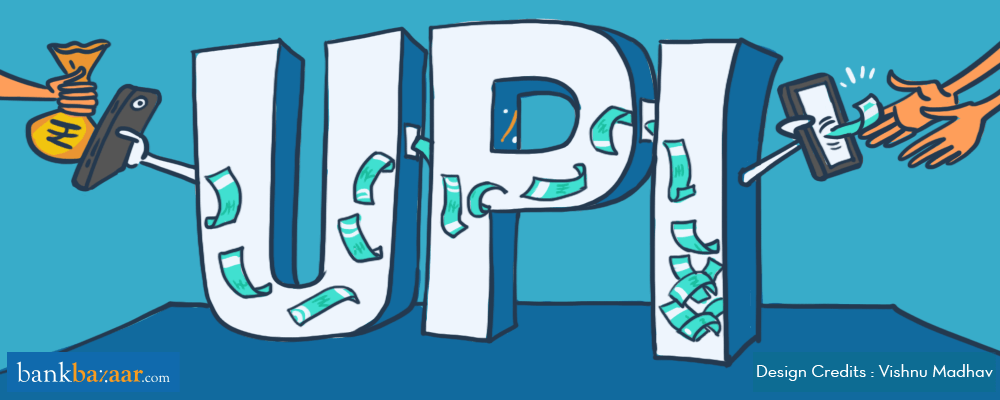
The Reserve Bank of India (RBI) Governor Raghuram Rajan launched the much awaited Unified Payment Interface (UPI) way back in April 2016, along with Nandan Nilakeni, Chairman of the Unique Identification Authority of India (UIDAI). This is a payment app that will help you use multiple bank accounts to make payments. So, whether it is HDFC bank, State Bank of India (SBI) or ICICI bank, you can use all those accounts on one UPI app to transfer funds. So, essentially, UPI is a way in which you can electronically transfer funds or make payments and was initiated and implemented by the National Payments Corporation of India (NPCI). Now, the NPCI is all set to upgrade the UPI app and the version 2.0 will have more features. But before that, you need to understand what UPI is all about.
How Does UPI Work?
UPI is based on the Immediate Payment Services (IMPS) infrastructure. As you might know, IMPS allows you to immediately transfer money from a bank account to other accounts. UPI is an enhanced version of IMPS, where you can send as well as request and receive money. Also, under UPI you will have a single identity and password for using multiple bank accounts. The best part? UPI is primarily for smartphones.
Additional Reading: All About Credit Card Trends versus Users
So, What’s Different?
- Multiple Accounts, One ID – Before you couldn’t use a single app of one bank to access the account of another bank. UPI has changed this. Since UPI is interoperable, you will be able to make payments using multiple bank accounts through your smartphone. This is essentially because your multiple bank accounts get linked to this one interface. Currently, smartphone usage in India is pegged at 30 crores and UPI will help tap this potential segment and get them on to digital banking.
- No Need To Disclose Your Account – Using UPI, customers can create a unique financial identity that would be linked to the bank account at the back end of the bank. So, to make transactions, you, as a customer, would need to share only this identity and not your bank account details to make payments or for transactions. Using the unique identity, NPCI will direct the transaction to the linked bank account and the bank will apply the relevant transaction at its end. The biggest advantage is that you can share the identity freely without worrying about whether your bank account or card details will be compromised. So, no more bank account numbers and IFSC codes.
- Uniform Authentication Process – Different banks follow different methods for authenticating payments or transactions. UPI has integrated this authentication process. Banks and other merchants use UPI to ensure that the authentication process is uniform and secure at the same time. UPI can help make transactions similar to withdrawing cash from any bank ATM while updating the relevant bank account.
- Instant Transactions – Earlier, you might have had a few transactions on websites, especially shopping sites, where your transaction either failed or was declined, due to multiple layer connections. These are connections that exist between the shopping site, payment gateway and the bank. UPI makes the connections simpler and quicker so that the process becomes more efficient and you can make instant payments.
- One Click, Two Factor – Your smartphone hardware acts as the first factor to authenticate the transaction. The second factor is a One Time Password (OTP) sent to your mobile or a PIN number which was generated earlier. This will be done with a single click.
Additional Reading: Paytm led the UPI transaction race in January 2019
Now that you know about UPI. Here’s what you could expect from UPI 2.0.
- Higher Transaction Limit – The UPI transaction limit will be doubled to Rs. 2 lakhs.
- Automated Collection Process – UPI was meant to act as a supplement to the existing Electronic Clearance Service (ECS) / National Automated Clearing House (NACH) debit process. So, UPI 2.0 will automate the collection process for the biller and funds can be requested using the interface. Individuals or merchants can send an invoice along with the payment request using UPI.
- Overdraft Account – Users will be allowed to add their overdraft (OD) account apart from their Savings Account. This will allow users to withdraw money even if they don’t have enough funds in their bank account.
- Use e-wallets – UPI 2.0 will allow you to use e-wallet account along with your bank accounts.
Additional Reading: 8 Instant Money Transfer Solutions You Didn’t Know About
UPI is the next big thing in mobile payments and is changing the face of how payments are done through smartphones. As of now, 29 banks have adopted UPI while others are expected to follow suit. Visit the NPCI website for the UPI banks list. You can download the best UPI app based on reviews from family and friends. So, try UPI to auto-debit your Home Loan account or pay your insurance premium. If you are yet to get a loan or an insurance policy, we are right here with the best offers.
Pingback: Send Money Using FB | BankBazaar - The Definitive Word On Personal Finance
There is a mention of RBI governor as Rajan. Is it Urjit Patel considering the article is dated 22nd Nov 2016?
Hi Ajith, Thanks for writing to us. UPI was launched by Raghuram Rajan, the then RBI Governor, in April 2016.